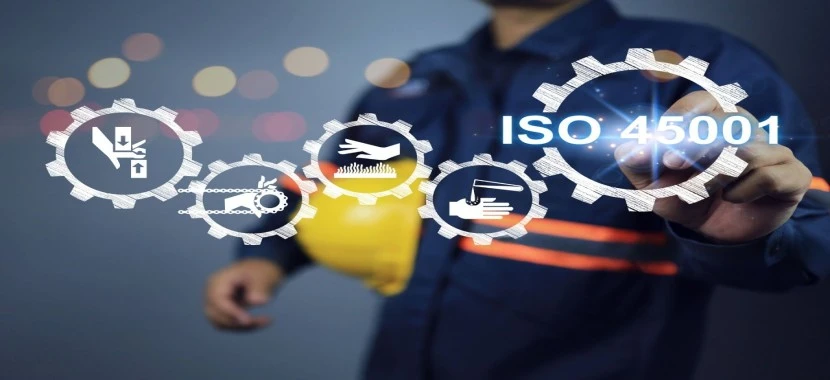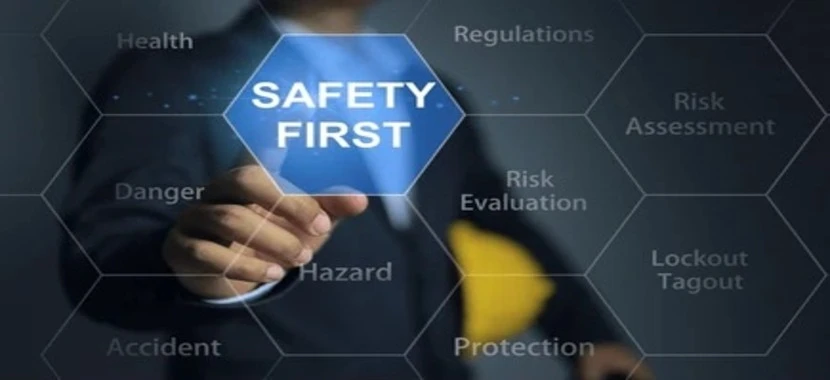
Workplace accidents continue to be a major concern across the UAE, particularly in high-risk sectors such as construction, oil and gas, manufacturing, logistics, and facility management. As industries expand and operational demands increase, the need for effective safety systems becomes more important than ever. ISO 45001, the global standard for Occupational Health and Safety Management Systems (OHSMS), as defined by the International Organization for Standardization, provides a structured framework that helps organizations reduce workplace risks and prevent accidents. This blog explores how ISO 45001 plays a vital role in improving safety performance across UAE industries.
Understanding Workplace Accident Risks in the UAE
For a detailed overview of the certification process, you can also refer to our ISO 45001 certification guide.
The UAE has a diverse industrial landscape, and many sectors operate in environments where risks are naturally higher.
High-Risk Industries in the UAE
- Construction – working at height, equipment hazards, falling objects
- Oil and Gas – chemical exposure, confined spaces, fire and explosion risks
- Manufacturing – machinery accidents, electrical risks, noise exposure
- Warehousing & Logistics – forklift accidents, manual handling, slips and trips
Each industry faces unique safety challenges, but the underlying causes of accidents are often similar.
Common Causes of Workplace Accidents
- Lack of hazard identification
- Insufficient training or awareness
- Poor communication between workers and supervisors
- Inadequate safety procedures or controls
- Failure to maintain equipment
- Weak emergency preparedness
These challenges highlight the need for a structured safety system like ISO 45001.
What ISO 45001 Is Designed to Do
ISO 45001 creates a systematic approach to managing occupational health and safety. It helps organizations:
- Identify workplace hazards
- Assess and control safety risks
- Train employees and promote safety culture
- Establish clear safety procedures
- Prepare for emergencies
- Measure safety performance
- Drive continual improvement
This structured approach helps organizations shift from reactive safety measures to proactive accident prevention.
How ISO 45001 Helps Prevent Workplace Accidents

ISO 45001 provides several mechanisms that directly contribute to accident prevention across UAE workplaces.
1. Structured Hazard Identification and Assessment
ISO 45001 requires organizations to conduct detailed hazard identification and risk assessments. This helps safety teams identify potential risks before they cause incidents.
Example: In the UAE construction sector, risk assessments guide safe scaffolding practices, lifting operations, and equipment handling.
2. Implementing Effective Operational Controls
Operational controls form the backbone of accident prevention. ISO 45001 requires organizations to develop and implement safety procedures such as:
- Lockout-tagout (LOTO) procedures
- Permit-to-work systems
- PPE usage requirements
- Safe equipment operating methods
These controls reduce the likelihood of accidents in environments with dangerous machinery or hazardous substances.
3. Strengthening Communication and Worker Involvement
ISO 45001 emphasizes the participation of workers at all levels. Key activities include:
- Safety briefings and toolbox talks
- Training programs
- Worker-led safety committees
- Reporting of near-miss incidents
In the UAE, where workforce diversity is high, improved communication significantly reduces misunderstandings that lead to accidents.
4. Improving Contractor and Subcontractor Safety
Contracting is common in UAE industries, especially construction and oil and gas. ISO 45001 requires organizations to manage contractor safety, including:
- Evaluating safety performance before hiring
- Providing site-specific safety training
- Monitoring contractor compliance
This reduces accidents caused by misalignment between company standards and contractor practices.
5. Monitoring Safety Performance and Incident Trends
ISO 45001 encourages organizations to measure safety KPIs and analyze incident trends, such as:
- Near-miss reports
- Frequent minor injuries
- Repeat hazards
- Unsafe behaviors
This data helps identify patterns and take corrective actions before accidents escalate.
UAE Regulatory Alignment
One of the biggest advantages of ISO 45001 is its alignment with UAE legal requirements.
1. UAE Labour Law Compliance
ISO 45001 supports compliance with mandatory safety provisions under federal labour regulations.
2. Dubai Municipality Requirements
Organizations in Dubai can use ISO 45001 to meet requirements related to construction site safety, equipment usage, and environmental safety measures.
3. OSHAD (Abu Dhabi) Framework Alignment
ISO 45001 closely matches the OSHAD standards for risk management, audits, training, and emergency preparedness, according to the OSHAD Framework. This makes ISO 45001 beneficial for companies operating in the Abu Dhabi jurisdiction.
Examples of How ISO 45001 Reduces Accidents in UAE Sectors
Construction
- Better scaffolding controls
- Safer working at height
- Improved communication on busy job sites
Oil and Gas
- Stronger emergency response readiness
- Better chemical and fire-risk management
- More effective permit-to-work processes
Warehousing and Logistics
- Reduced forklift collisions
- Safe route planning
- Better manual handling procedures
Manufacturing
- Safer machinery operation
- Improved electrical safety
- Clear lockout-tagout systems
Each example shows how ISO 45001 moves safety management from reactive to preventive.
Benefits of Implementing ISO 45001 in the UAE
Implementing ISO 45001 offers long-term advantages such as:
- Reduction in workplace accidents
- Improved safety culture and employee morale
- Better legal compliance
- Lower insurance claims and costs
- Stronger reputation with clients and stakeholders
- Higher operational efficiency
UAE companies that adopt structured safety systems often see measurable improvements in productivity and employee wellbeing.
Role of ISO 45001 Consultants
ISO 45001 consultants help organizations with:
- Developing documentation
- Conducting risk assessments
- Training employees
- Guiding implementation
- Preparing for audits
- Supporting continual safety improvement
This ensures companies implement ISO 45001 correctly and achieve sustainable safety performance.
Conclusion
ISO 45001 is a powerful standard that helps UAE industries prevent workplace accidents and strengthen safety culture. By identifying risks, improving communication, implementing strong operational controls, and continually monitoring performance, organizations can significantly reduce incidents and improve worker protection. As UAE industries continue to grow, adopting ISO 45001 remains one of the most effective ways to ensure safe, compliant, and productive workplaces.
